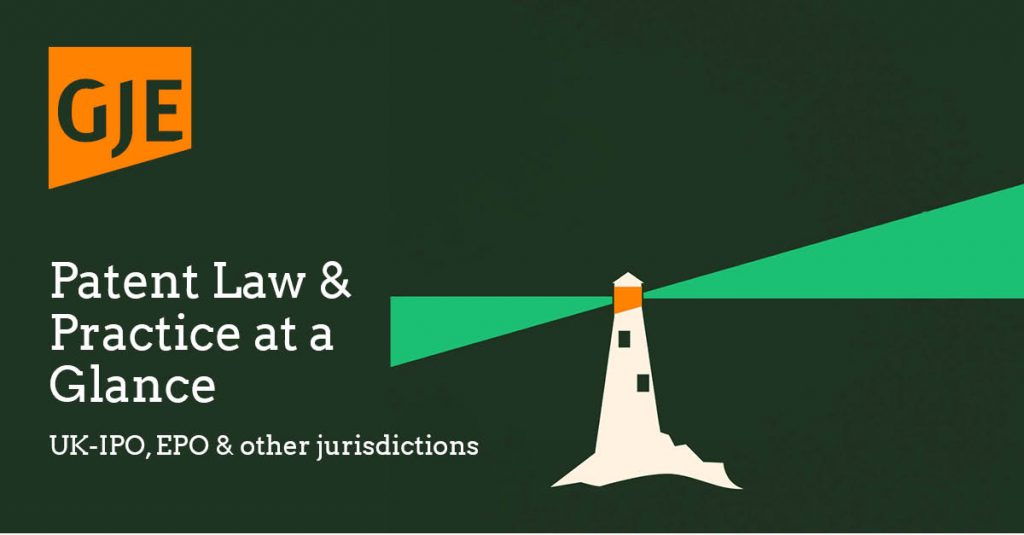Background
The patent priority system was established by the Paris Convention to provide an applicant with 1 year grace to get their foreign applications filed after filing their first (usually local) application. This effectively provides an additional year of patent term and enables patent applicants to bolster their initial filing with additional supporting material (e.g., experimental data) in the priority-claiming application (usually an international “PCT” application). The requirements for priority enshrined in the Paris Convention have not changed since inception but there has been some divergence in local practices. This article provides a brief overview of a recent very high-profile appeal at the European Patent Office (EPO) that explored the requirements for a valid priority claim in Europe in detail and provided some comment on divergence with the USA.
The Decision
The appeal in question, T 0844/18, concerned the Nobel prize-winning gene editing technology CRISPR-Cas9. The crucial importance of the patent thrust a “procedural” problem with the patent into the limelight because it led to complete revocation of the patent at opposition. Indeed, because of the importance of the technology the opposition proceedings themselves, which involved 9 opponents, were also very high profile and my report of the first instance decision in 2018 can be found here.
The Technical Board of Appeal of the EPO heard the case over 4 days in January 2020 and then dismissed the appeal, upholding the opposition division’s decision to revoke the patent in its entirety. The revocation was for lack of novelty over the Applicants’ own publication in the priority year. The appeal did not touch on the technical merit of the invention; it was only the validity of the earliest priority claim that was at issue.
European patent 2 771 468 was owned jointly by The Broad Institute, MIT and Harvard College. The patent was based on a PCT application filed in the name of these 3 entities that claimed priority from 12 US provisional applications. The priority claim from 4 of these, including the first, was found invalid. The issue was that the first provisional, amongst others, named an inventor who worked at the Rockefeller University and whose rights in the application were not at any time assigned to any of the 3 joint owners of the European patent. As neither the Rockefeller, nor their inventor, nor any successor in title, was mentioned as applicant on the PCT application the collective owners of the provisional application and the PCT application were different.
The opposition division revoked the patent by following the long-standing practice at the EPO of applying the so-called “all applicants” or “same applicant” approach to assessing priority. This dictates that a priority claim is only valid if it is claimed by the same applicant(s) who established the priority date, or their successor(s) in title, as assessed on the day of filing of the priority-claiming application. When multiple applicants are named, they are considered by the EPO as a single entity for the purposes of priority assessment.
The question before the Board of appeal therefore, was whether this “all applicant” approach is correct. The Board decided that this approach is correct but the reasoning in the decision raised some interesting points and provides some useful take away messages that should be borne in mind when filing applications that are destined to be examined at the EPO.
The appellants approached the appeal by seeking answers to the following three questions:
- Is the EPO competent to invalidate a priority claim on legal grounds, rather than on technical grounds? – they argued that as the EPO is not competent to rule on entitlement to a patent (this is deferred to national courts in the European Patent Convention (EPC)), the EPO’s competence with regard to priority should be limited to the technical issue of whether the two applications disclosed the “same invention”, and should not encompass the legal issue of whether the “owners” of the two applications were the same on filing.
- What is the meaning of “any person” in the EPC and Paris Convention? – the law states that “any person” who has filed a patent application, or their successor in title, shall enjoy a right of priority for the purposes of filing a European patent application, and the appellants argued that “any” does not mean “all” and that “any” should be interpreted in an open way to mean any of the applicants, contrary to the EPO’s “all applicant” approach. Indeed, they argued that this approach restricts a right established by an international treaty by imposing additional requirements, in violation of the European Convention on Human Rights.
- Does national law govern the determination of how “any person” should be interpreted? – they argued that as the priority application in this case was a US provisional application, that the US practice of interpreting the “any person” requirement should prevail over the practice of the EPO.
On the question of the EPO’s competence to decide on priority validity, the Board returned to the text of Article 87 EPC, which mirrors Article 4A of the Paris Convention, and concluded that the EPO clearly sets out a requirement that the EPO examines the “Who?” issue of priority entitlement. The Board noted that the EPO does not require that the “any person” who has filed an application is “entitled” to do so, just that they “have” done so. Thus, the EPO’s assessment does not go beyond a formal assessment of the person (“any person”) who has performed the act of filing the patent application, but does require them to be the same person, or their successor in title. The Board dismissed the appellants’ concerns that the EPO practice meant that issues of title raised by a non-owner can be used to destroy the underlying property right by noting that the EPC sets many formal requirements and failure to comply with any formal requirement of the EPC can destroy a patent, irrespective of whether it satisfies the substantive requirements for patentability. The Board noted that the appellants chose the named applicants in a way that did not comply with well-established practice at the EPO and it was not for the Board to repair such errors.
The Board’s interpretation of the meaning of “any person” was based on their view of the object and purpose of the Paris Convention, and on more broad public policy considerations. The purpose was to provide a legal fiction of simultaneous filing of an application, by an applicant, across multiple territories, which establishes both substantive (same invention) and formal (same applicants) requirements for a priority right to be acknowledged. The Board noted that the appellants’ interpretation of “any person” would allow co-applicants to deprive their other co-applicants of rights in another country by leaving them off priority-claiming applications. The Board’s view was that the object and purpose of the Paris Convention cannot form the basis for favouring one or some persons to the detriment of all other persons who filed the original application. The Board noted that the EPO’s “all applicant” approach was not only backed by over 100 years of consistent case law but was also consistent with the Paris Convention.
Finally, on the subject of national law determining the interpretation of “any person” the Board noted that non-European applicants are expected to meet the same high standards as European applicants for European patent applications. The appellants’ argued that under US practice it is possible to file a provisional application containing multiple different inventions having different owners and inventors, and then to separate out those inventions and owners/inventors by filing separate priority-claiming applications having different applicants. The Board noted that “applicants wishing to use US provisional applications should be aware of the difficulties they may face if they use these applications to claim priority for a European patent application”.
What you should do
Therefore, it is crucial that special care is taken when naming applicants on priority-claiming PCT (or direct European) applications. Regardless of whether ownership of a patent can be divided under your local law, at the EPO (and across Europe), ownership of a patent is not divisible: all applicants are joint owners of the whole of the application, regardless of contents and inventorship. A clear chain of title is required by the EPO when there are changes.
We recommend that the following checks are performed prior to filing any priority-claiming application that is destined for examination at the EPO, or anywhere in Europe:
- Are the “applicants” on the priority application(s) identical with the “applicants” on the priority-claiming application? If yes, then it is ok to file.
- If not, then has a transfer of ownership document (including specific wording transferring the right to claim priority) accounting for the change been executed by all parties? If yes, then it is ok to file with the change (and ensure your European attorney is provided with a copy of the document)
- If no transfer of ownership document has been executed, then file the application naming only the original applicants and address the change at a later date. An assignment dated after the filing date will not restore the priority right at the EPO.
- Finally, ensure that only legal entities (using the full registered name) are named as applicants and not trading names or abbreviations.
If you have any questions or concerns about the requirements for a valid claim to priority at the EPO or would like to discuss this matter further, then please get in contact with Ross Cummings or your usual contact at GJE.

